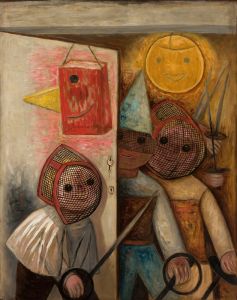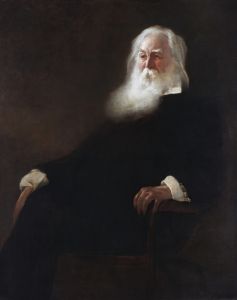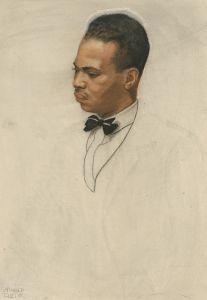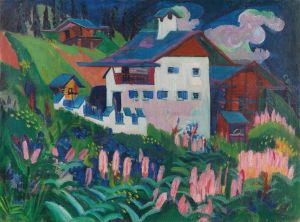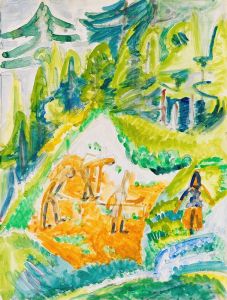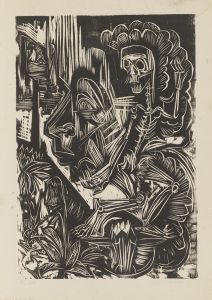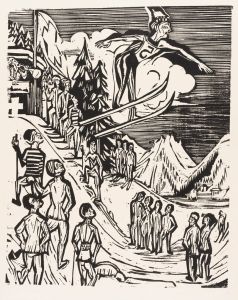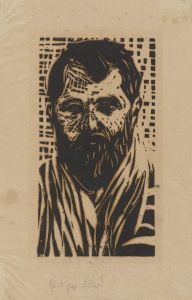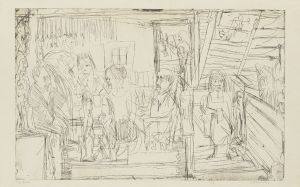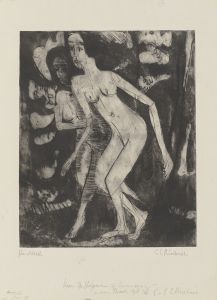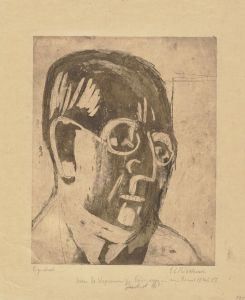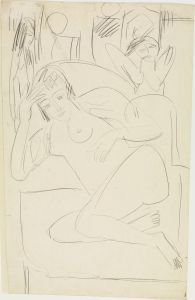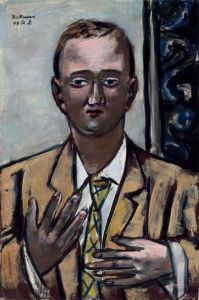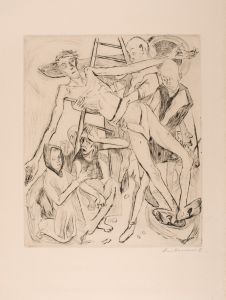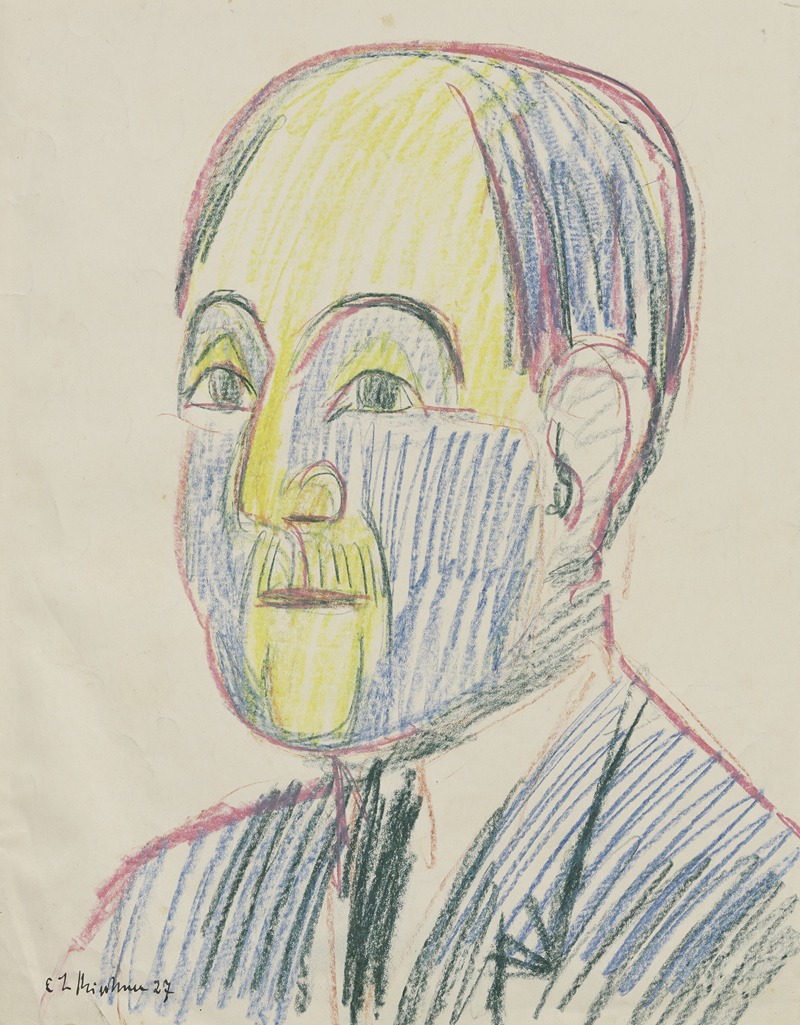
Bildnis Ernst Gosebruch
A hand-painted replica of Ernst Ludwig Kirchner’s masterpiece Bildnis Ernst Gosebruch, meticulously crafted by professional artists to capture the true essence of the original. Each piece is created with museum-quality canvas and rare mineral pigments, carefully painted by experienced artists with delicate brushstrokes and rich, layered colors to perfectly recreate the texture of the original artwork. Unlike machine-printed reproductions, this hand-painted version brings the painting to life, infused with the artist’s emotions and skill in every stroke. Whether for personal collection or home decoration, it instantly elevates the artistic atmosphere of any space.
"Bildnis Ernst Gosebruch" is a painting by the renowned German Expressionist artist Ernst Ludwig Kirchner. Kirchner, a founding member of the influential artist group Die Brücke, was known for his vibrant use of color and dynamic compositions, which sought to convey emotional experiences rather than physical reality. This particular work is a portrait of Ernst Gosebruch, a significant figure in the art world during the early 20th century.
Ernst Gosebruch was a prominent art historian and museum director, best known for his role as the director of the Museum Folkwang in Essen, Germany. During his tenure, Gosebruch was instrumental in promoting modern art and was a strong advocate for contemporary artists, including members of Die Brücke. His support and acquisition of modern artworks for the museum helped establish its reputation as a leading institution for modern art in Europe.
Kirchner's portrait of Gosebruch reflects the artist's distinctive style, characterized by bold colors and expressive brushwork. The painting captures Gosebruch in a thoughtful pose, emphasizing his intellectual presence and his significant contributions to the art world. Kirchner's use of color and form in this portrait exemplifies the Expressionist movement's focus on emotional depth and subjective interpretation.
The relationship between Kirchner and Gosebruch was mutually beneficial. While Gosebruch supported Kirchner and his contemporaries by acquiring their works and promoting their art, Kirchner and other Expressionists provided Gosebruch with the innovative and groundbreaking art that he sought to showcase at the Museum Folkwang. This collaboration highlights the interconnectedness of artists and patrons in the development and dissemination of modern art during this period.
"Bildnis Ernst Gosebruch" is an important example of Kirchner's portraiture, which often depicted friends, fellow artists, and influential figures within his social and professional circles. These portraits not only served as personal expressions of Kirchner's relationships but also as reflections of the broader cultural and artistic movements of the time.
The painting is part of Kirchner's broader body of work, which includes a wide range of subjects such as urban scenes, landscapes, and nudes. His work is characterized by a departure from traditional artistic conventions, embracing instead a more abstract and emotionally charged approach. Kirchner's contributions to the Expressionist movement have left a lasting impact on the art world, influencing generations of artists who followed.
Today, Kirchner's works, including "Bildnis Ernst Gosebruch," are held in high regard and can be found in major museums and collections worldwide. They continue to be studied and appreciated for their innovative approach and their ability to convey the complexities of human emotion and experience. The portrait of Ernst Gosebruch remains a testament to the enduring legacy of both the artist and his subject, capturing a moment in art history where creativity and intellectualism converged to shape the future of modern art.





